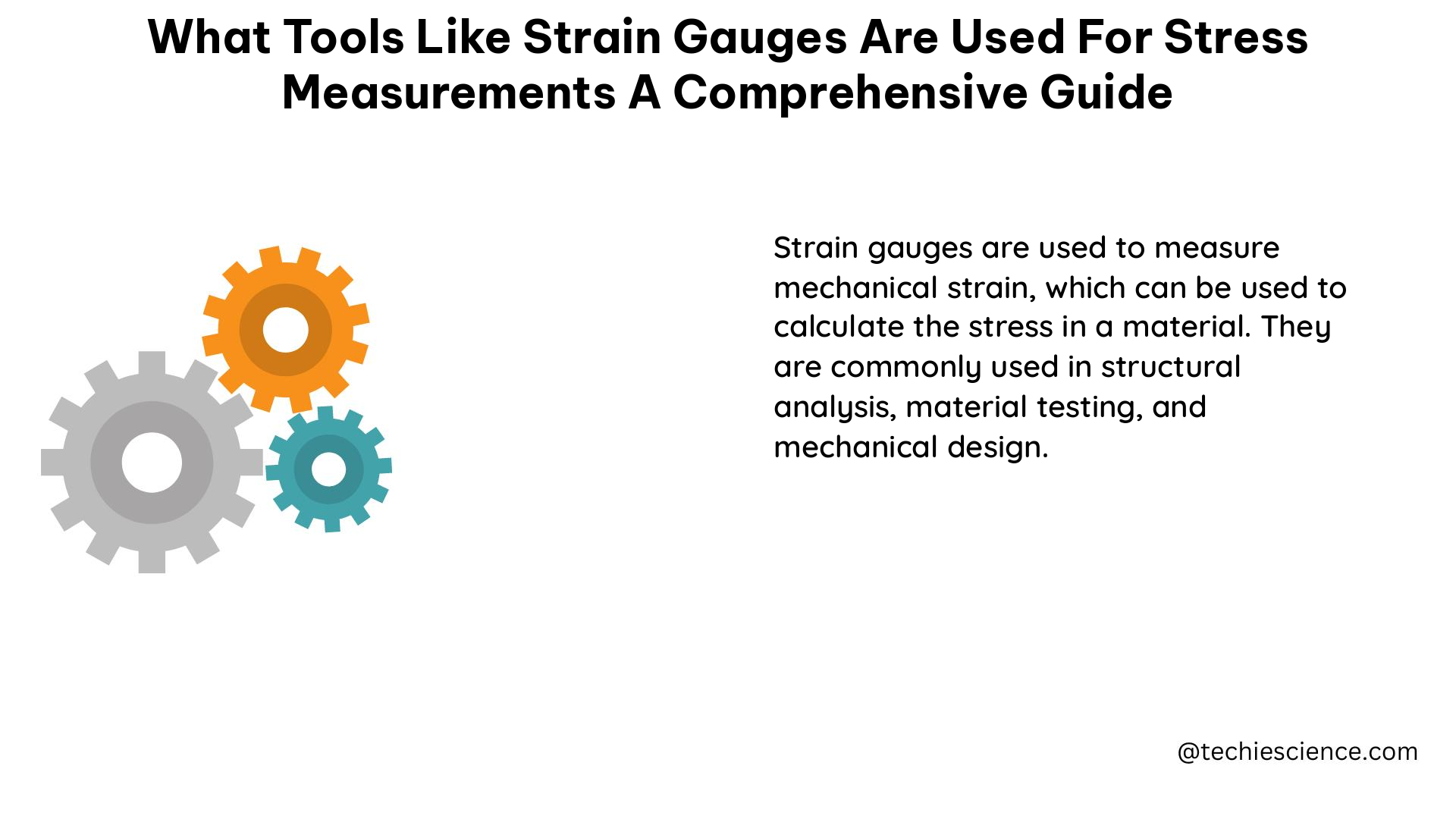Strain gauges are widely used tools for stress measurements due to their accuracy, low cost, and ease of use. They measure strain, which is defined as the deformation of an object due to an applied force. Strain can be normal or shear, and it is usually measured in units of microstrain (με) or engineering strain (ε). The gauge factor (GF) is a dimensionless measure of a strain gauge’s sensitivity to strain, typically around 2 for metallic strain gauges.
Understanding Strain Gauges
Strain gauges work by measuring the electrical resistance of a strain-sensitive material, which changes in proportion to the amount of strain experienced by the test specimen. The most common type of strain gauge is the bonded metallic strain gauge, which consists of a very fine wire or metallic foil arranged in a grid pattern and bonded to a thin backing called the carrier. The carrier is attached directly to the test specimen, allowing the strain experienced by the specimen to be transferred directly to the strain gauge.
Wheatstone Bridge Principle
Strain gauge measurements are typically based on the concept of a Wheatstone bridge, which is a network of four resistive arms with an excitation voltage applied across the bridge. Strain gauges are configured in Wheatstone bridge circuits to detect small changes in resistance due to strain. The output of the bridge is usually too low (<10mV) for accurate measurement and requires electrical amplification and a steady current source.
Types of Strain Gauges
There are various types of strain gauges, each with its specific use case:
- Linear Strain Gauges: Used to indicate strain in only one direction.
- Rosette Strain Gauges: Measure biaxial stresses with unknown principal directions.
- Torsion Strain Gauges: Measure shear strain and torque.
- Dual Parallel Strain Gauges: Measure bending stress.
Factors Affecting Strain Gauge Measurements
Strain gauge measurements can be affected by various factors, such as:
- Resistance Tolerances: Variations in the resistance of the strain gauge can introduce errors.
- Strain Induced by Gauge Application: The process of applying the strain gauge can introduce additional strain, affecting the measurements.
- Long Lead Wires: Long lead wires can add resistance to the arm of the Wheatstone bridge, introducing offset errors.
Proper selection and use of the bridge, signal conditioning, wiring, and data acquisition (DAQ) components are essential for generating reliable measurements.
Other Tools for Stress Measurements

In addition to strain gauges, other tools for stress measurements include:
- Extensometers: Use a system of levers to amplify minute strains to a level that can be read.
- Photoelectric Gages: Use a combination of mechanical, optical, and electrical amplifications to measure strain.
Selecting the Right Tool for Stress Measurements
When selecting a tool for stress measurements, it is essential to consider the following factors:
- Testing Application: The specific requirements of the testing application, such as the type of stress being measured (e.g., tensile, compressive, shear) and the expected strain levels.
- Test Environment and Levels: The environmental conditions (e.g., temperature, humidity, vibration) and the expected stress/strain levels.
- Device Under Test/Test Setup: The characteristics of the device or structure being tested, including its size, shape, and material properties.
Additional hardware, such as signal conditioners, power supplies, and cables, may be necessary for conditioning and acquiring measurements.
Reference
- Omega Engineering’s guide to strain gauges and force strain measurement: https://www.omega.com/en-us/force-and-strain-measurement/c/strain-gauges
- Vibration Research’s introduction to strain gauges for stress analysis: https://vibrationresearch.com/blog/strain-gage-basics/
- National Instruments’ guide to measuring strain with strain gages: https://www.ni.com/en-us/shop/data-acquisition/sensor-fundamentals/measuring-strain-with-strain-gages.html

The lambdageeks.com Core SME Team is a group of experienced subject matter experts from diverse scientific and technical fields including Physics, Chemistry, Technology,Electronics & Electrical Engineering, Automotive, Mechanical Engineering. Our team collaborates to create high-quality, well-researched articles on a wide range of science and technology topics for the lambdageeks.com website.
All Our Senior SME are having more than 7 Years of experience in the respective fields . They are either Working Industry Professionals or assocaited With different Universities. Refer Our Authors Page to get to know About our Core SMEs.